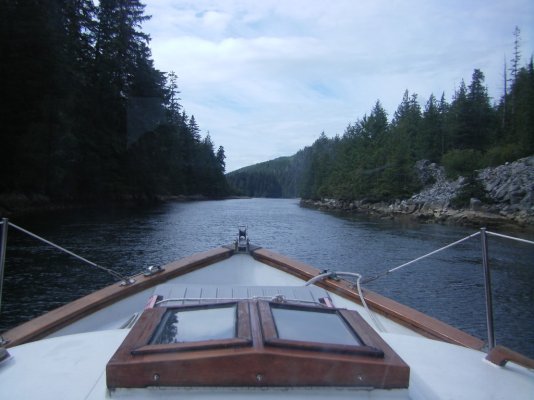Steve--- Your question is a bit like, "I really need a parachute for jumping out of my plane in an emergency but I don't really have a good place to stow it, so I'm thinking an umbrella will work just as well."

Strictly to my way of thinking, particularly since experiencing first hand the results of poor anchor performance, I think a boat should be equipped with whatever it takes to keep it in place under the worst conditions the boater can conceive of encountering in the waters he boats in. For a boat the size and weight of yours--- remember, it's not just the wind that can un-set your anchor, the waves and the weight of your boat pitching up and down on a tight anchor rode will contribute, too--- I would not even consider a 35# anchor of the typical designs--- Bruce, CQR, Danforth, Rocna, Manson Supreme, etc. In fact I'm not sure I'd stop at even a 44# anchor but go at least to the next size up. If you have a really big Fortress and the bottoms you anchor in are suitable for this Danforth-type anchor, you can most likely get away with a lighter anchor.
If the bottoms you anchor in dictate a more multi-purpose anchor than a Fortress, then I would get the heaviest one your boat can accommodate without messing up the trim or being too unwieldy to stow. If your current windlass can't cope with this weight of anchor, then get a windlass that can.
With some exceptions, the anchor weights as recommended by the manufacturers tend to be too small for reality. This was certainly the case with Bruce when they were making small boat anchors. As Carl (Delfin) has pointed out--- correctly in my opinion--- the larger and heavier a Bruce anchor is, the more reliable it will be. The recommended size for our boat was 33#. So that's what we bought and it proved to be a bad choice. Had we been absolutely determined to make a Bruce work, knowing what we know now I would not get one for our 36' boat that was less than sixty or seventy pounds and preferably 100 pounds. This way the weight would make up for what I believe is the inherent deficiency of its design when the anchor is reduced in size for boats like ours. But our boat can't accommodate a 60 or 70 or 100 pound anchor. So we went to another design. The point being, don't go just by what the manufacturers say is the size for your boat.
You will get away with a too-light anchor of a less effective design on the end of a weak windlass in most of your anchoring situations unless you regularly visit exposed anchorages where stronger winds and waves are the norm. But like everything else, every anchor including a rock is 100% reliable until the day it fails to hold your boat. And usually that day is actually night or 3:00am when the winds pick up, your anchor starts to drag, and you're anchored off a close-by lee shore. Wishing you'd bought a larger or more effective anchor, or that you had a windlass that would get the anchor up at something greater than a snail's pace is not going to make the situation any less dangerous.
You've only got one chance to get your anchor, rode, and windlass combination right. Because unless you're Eric and change anchors and rodes on a daily basis

-) ) what you buy is what you will have until the day comes when it fails you. Since none of us want that day to come, it makes sense to get the best setup for your boat and your anchoring conditions right off the bat.
Do you want to take off on a flight with a parachute or an umbrella on board?







